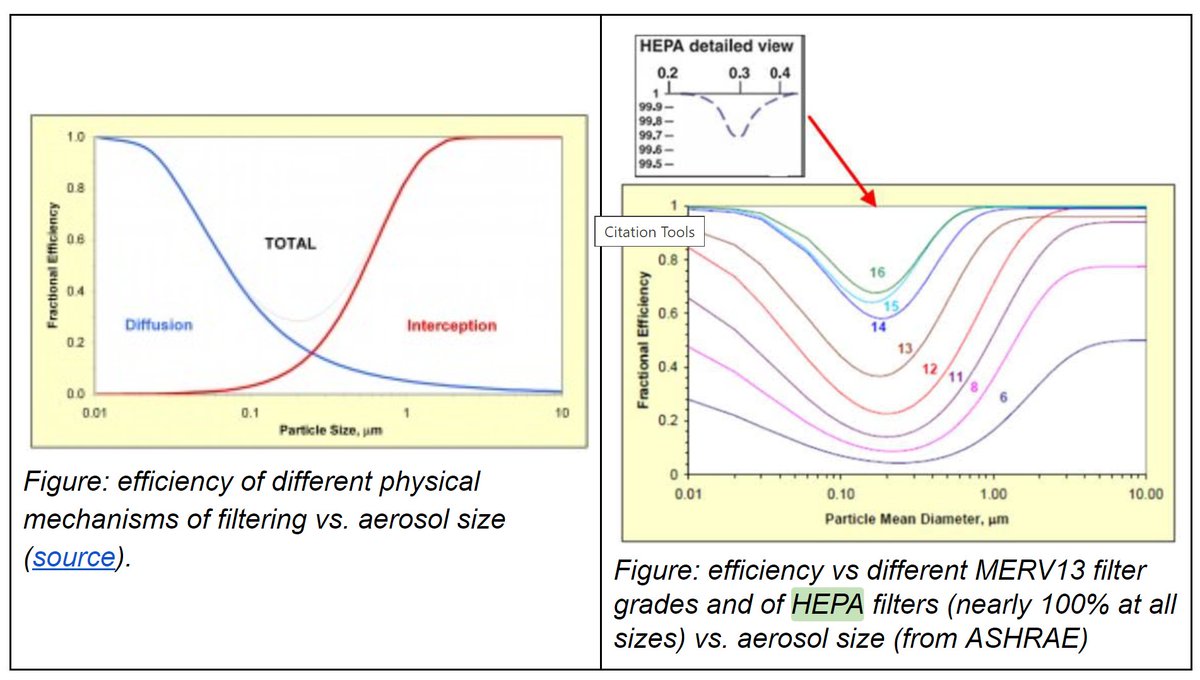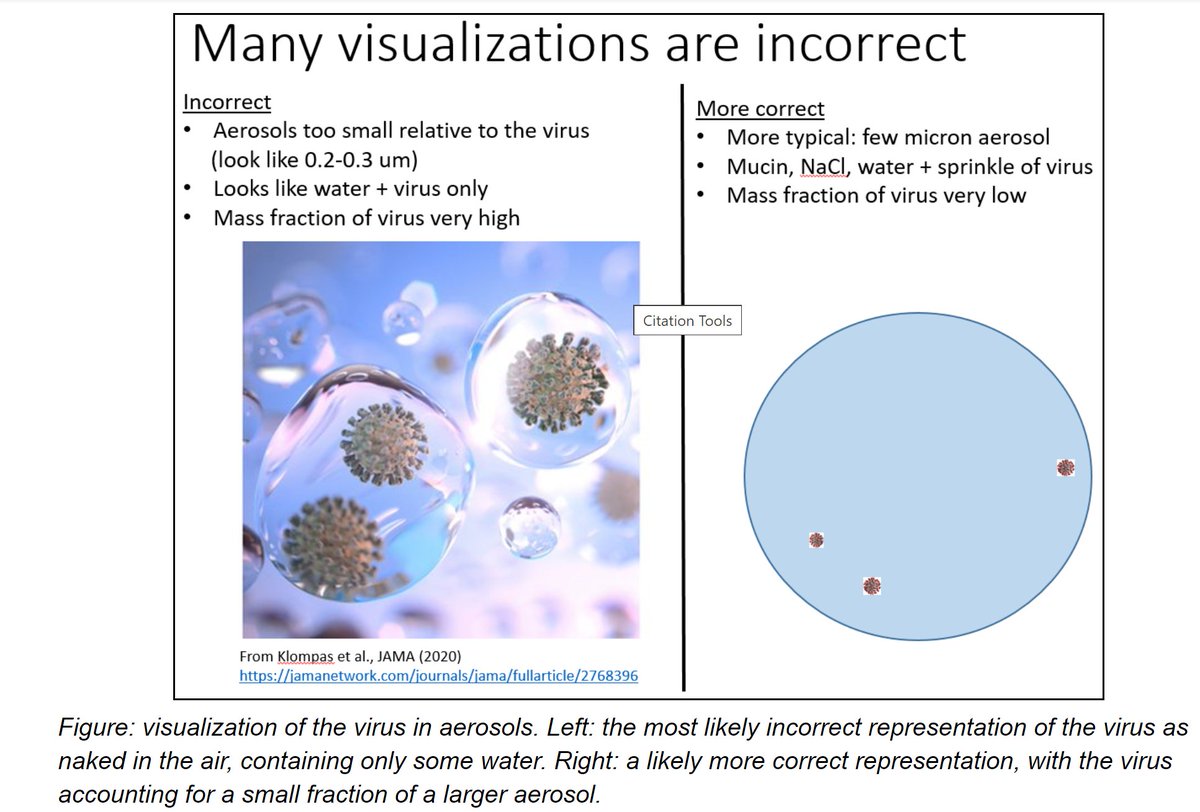
1/ My take on the CDC update
It is a step in the right direction, in that it finally acknowledges that airborne transmission can happen.
However, it has 2 problems in my opinion.
cdc.gov/coronavirus/20…
It is a step in the right direction, in that it finally acknowledges that airborne transmission can happen.
However, it has 2 problems in my opinion.
cdc.gov/coronavirus/20…
2/ First, It is written in quite a confusing way.
Instead of using the widely accepted word "aerosol", it calls the particles that float in the air and infect by inhalation "small droplets."
Instead of using the widely accepted word "aerosol", it calls the particles that float in the air and infect by inhalation "small droplets."
3/ Calling aerosols "small droplets" is quite confusing.
These are aerosols, and their behavior is totally different from the "droplets" that CDC used to say dominate transmission.
Droplets are projectiles that infect by impacting on someone's eyes, nostrils, or mouth
These are aerosols, and their behavior is totally different from the "droplets" that CDC used to say dominate transmission.
Droplets are projectiles that infect by impacting on someone's eyes, nostrils, or mouth
4/ For a detailed review of how aerosols and droplets are defined (both throughout history, and in recent practice by @CDCgov, @WHO, and the scientific literature), see this thread:
https://twitter.com/jljcolorado/status/1307918933391933441
5/ The update says that "small droplets" (i.e. aerosols) can infect both in close proximity and in shared room air
But, contrary to current scientific practice, only the second one is described as "airborne" transmission
@linseymarr also made this point: nytimes.com/2020/10/05/hea…
But, contrary to current scientific practice, only the second one is described as "airborne" transmission
@linseymarr also made this point: nytimes.com/2020/10/05/hea…
6/ In reality both are airborne transmission. Close proximity is normally described as "short-range airborne." The 2nd is "shared room airborne."
(There is also "long-range airborne", e.g. measles, beyond shared room, but has not been documented for SARS-CoV-2 to my knowledge)
(There is also "long-range airborne", e.g. measles, beyond shared room, but has not been documented for SARS-CoV-2 to my knowledge)
7/ Finally, IMHO CDC downplays the importance of airborne transmission. We know that superspreading events are a major component of transmission. And every single superspreading event that has been studied appears to be dominated by aerosol transmission.
8/ For example the choir case that we have studied: doi.org/10.1111/ina.12…
To my knowledge, not a *single* superspreading event that has been studied, has been convincingly connected to large droplet or fomite transmission.
(Send papers to me, if I am missing any)
To my knowledge, not a *single* superspreading event that has been studied, has been convincingly connected to large droplet or fomite transmission.
(Send papers to me, if I am missing any)
9/ But the CDC appears to say that airborne transmission in shared room air is rare. I think this is incorrect. Aerosols drive superspreading, which is not rare. See theatlantic.com/health/archive…
(For example, IMHO it is the most likely explanation for the outbreak at the White House)
(For example, IMHO it is the most likely explanation for the outbreak at the White House)
• • •
Missing some Tweet in this thread? You can try to
force a refresh







